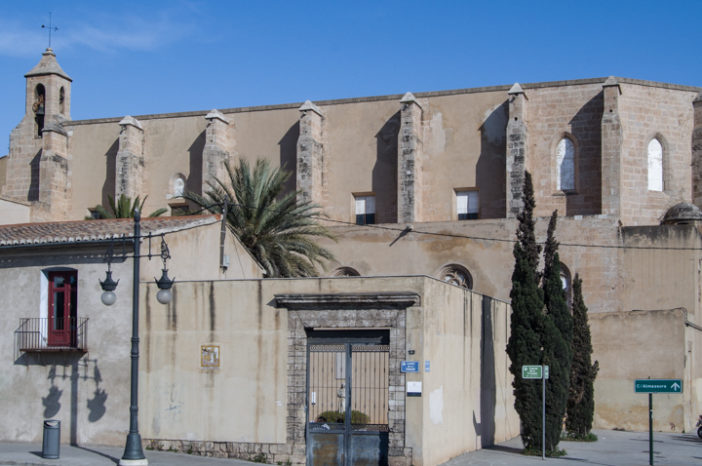Holy Trinity Monastery
The Trinidad Monastery is located on the street of the same name in Valencia, next to the beginning of Calle Alboraia. It is located on the left bank of the old Turia riverbed, outside the walls of the old city.
It is a perfect example of Mediterranean Gothic architecture, with subsequent Baroque interventions. A building founded in the thirteenth century as a monastery and hospital, which was inhabited since 1444 by Poor Clare nuns. Maria of Castile, Queen of Aragon, wife of Alfonso V the Magnanimous, who had been educated by this order, wanted to have a place of retreat next to the city. For this reason he made numerous donations to this monastery and was granted different privileges.
Two important Valencian literary personalities linked to this convent were Sister Isabel de Villena, its first abbess, considered the first known writer in Valencian; and Jaume Roig, another great figure of letters in the Valencian Golden Age, who was a doctor in this community. The building houses manuscripts of both writers.
Attention is drawn to the façade of the church, an excellent example of flamboyant Gothic built with stalls and tapial. The main door, which has an arch flanked by pinnacles, is from the fifteenth century. Its decoration refers to the doors of the Lonja. In the tympanum of the cover we find a magnificent Renaissance tondo, a replica made in Italy of the original made in baked clay that is in the National Museum of Ceramics González Martí.
The interior of the temple stands out for its spaciousness and its baroque ornamentation of the seventeenth century. It houses unique artistic gems, such as the Santa Staircase in Valencia, which can be visited by prior reservation.
Listed as an Asset of Cultural Interest. Declared a National Historic-Artistic Monument.

Dades bàsiques
Guided tours: 960 961 855
Calle de la Trinidad, 13
46010 Valencia
EMT bus (stop Museu de Belles Arts): lines 1, 6, 11, 16, 26, 28, 29, 79, 95
Tram: Pont de Fusta stop